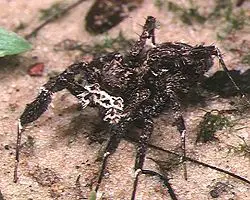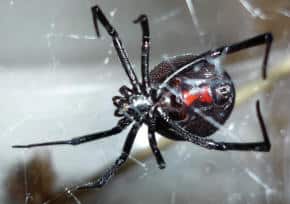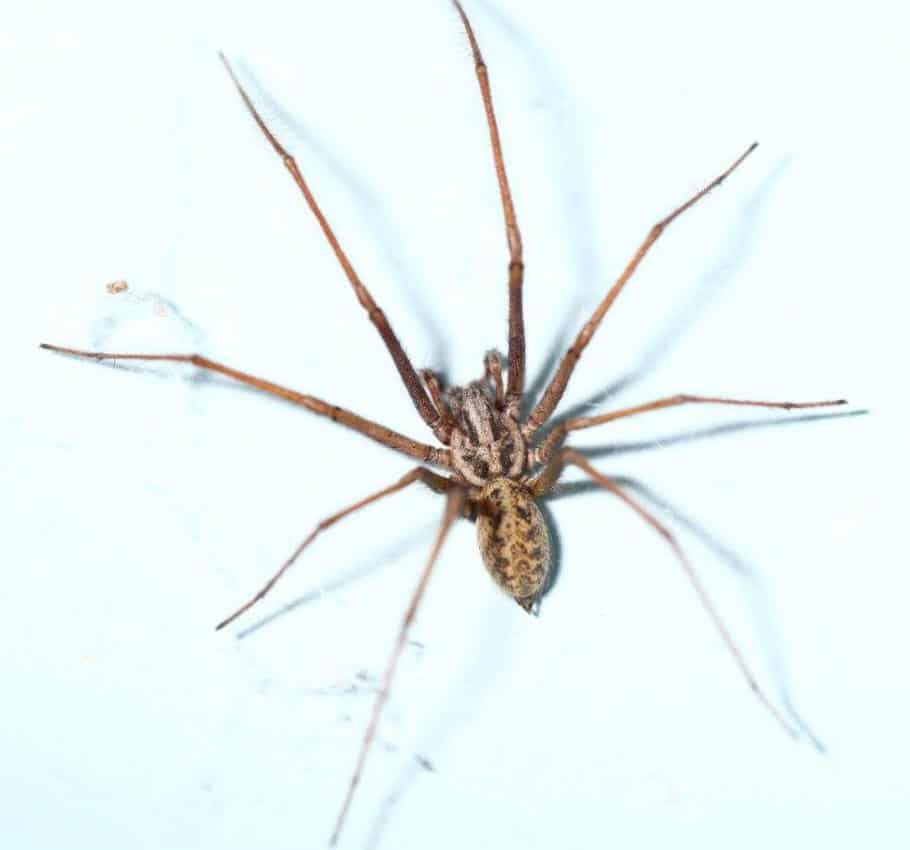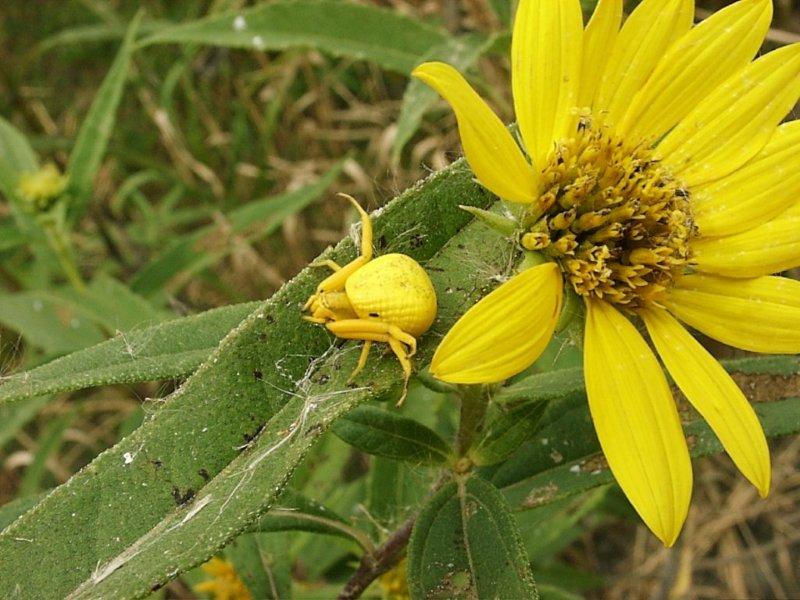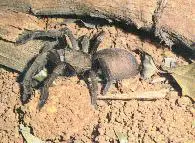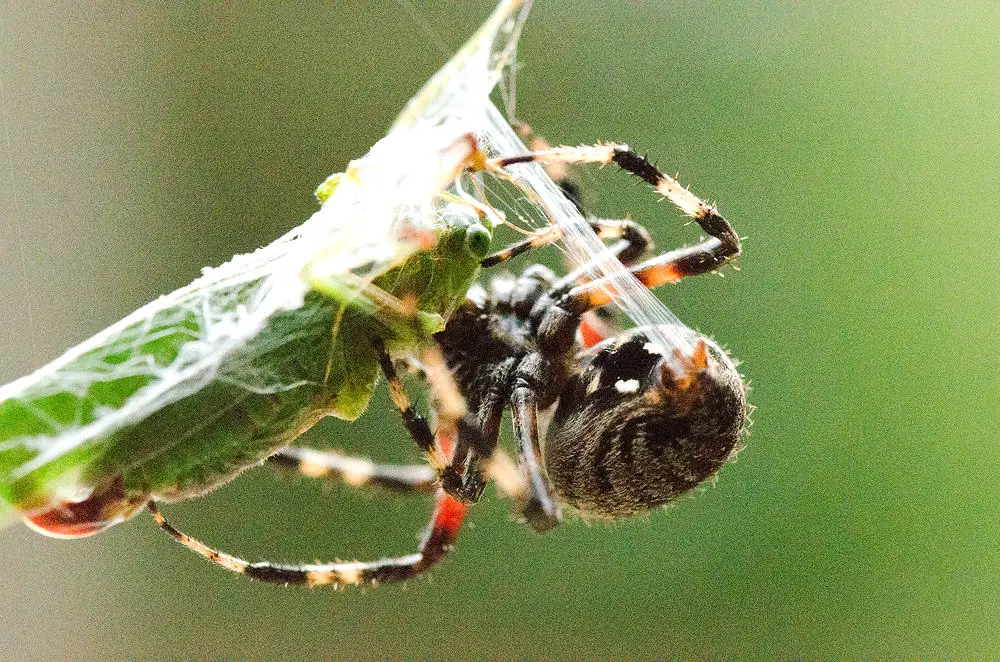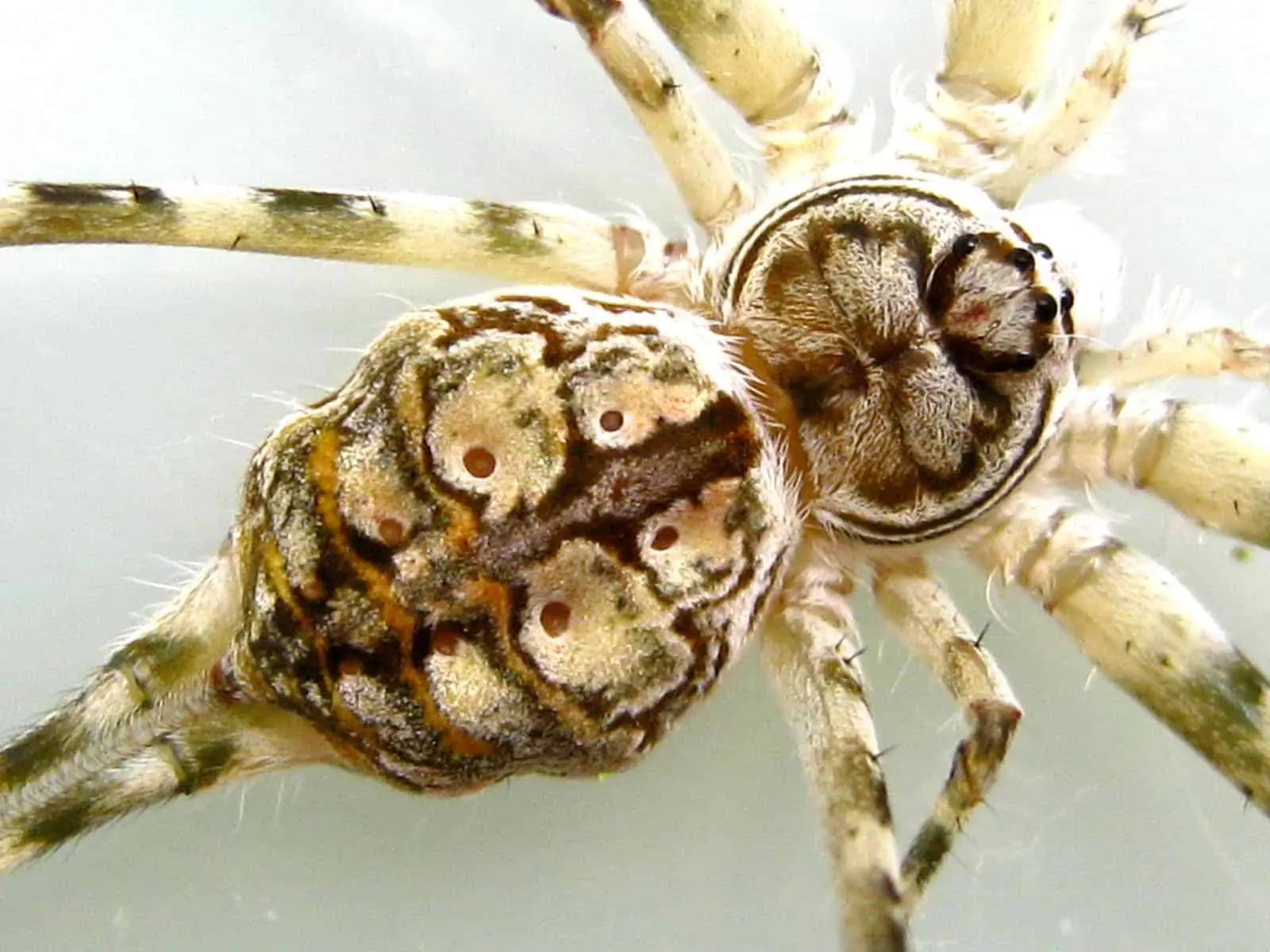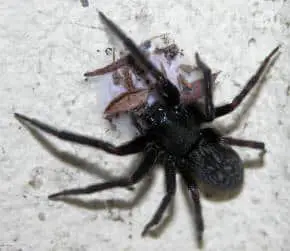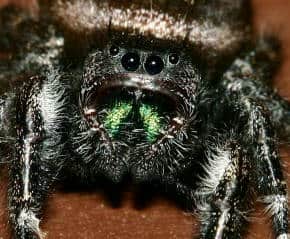The Spitting Spider (Latin name Scytodes thoricica) belongs to the family of six eyed spiders. (Haplogynae). It is called the “Spitting Spider” because it spits a poisonous sticky substance over its prey. Its body size ranges between 3 and 6 mm. Habitat: This spider lives in New Mexico which is in North America. Prey: The […]
Portia Spider
The Portia group of spiders contains 15 species of African, Asian and Australian jumping spiders measuring up to 10 millimetres or 0.39 inches. Odd in appearance, it resembles a scrap of vegetation. Rather than scurrying about like other jumping spiders, the Portia has slow, choppy gait, much like robots in science fiction movies. The Portia is […]
Widow Spider
Black Widow is a common name of some spiders in the genus Latrodectus which belong to the spider family Theridiidae, or the cobweb weavers. The North American species are (Western) Black widow, Latrodectus hesperus; (Southern) Black widow, Latrodectus mactans; (Northern) Black widow, Latrodectus variolus. Spiders of the genus Steatoda also belong to the spider family Theridiidae and are often confused with the […]
Giant House Spider
Giant House Spider (Eratigena atrica). Tegenaria duellica/gigantea and T. saeva were synonymized with T. atrica and moved to the new genus Eratigena as of August, 2013. Eratigena is an anagram of the genus name Tegenaria (Bolzern et al. 2013). The specific epithet, atrica, is formed from atri- after the Latin noun for “atrium” with the addition of the -ica suffix meaning “belonging to” (often used when referring […]
A Reader’s Spider Photos
Here are some nice photos sent in by one of my readers. I’ll try and ID the ones I know but there are a few different ones there that I am not familiar with. If you can help with an ID please email me. Click the photos for a larger view and ID. Thank you […]
Bird Eating Spider
The Bird Eating Spider is one of Australia’s largest spiders belonging to the Trapdoor family. Trapdoor spiders include the Funnel-web, Mouse, Whistling/Bird Eating/Barking, and Curtain-web spiders; they are distinguished by the stocky body, long leg-like palps, and two knee-like lobes to which the fangs join (chelicerae) in front. Most live in burrows with or without […]
Orb Weaver
There are many types of “Orb web” spiders, in fact any spider that spins an orb-shaped web may be classified as an “orb web weaver”. These include the Golden Orb-weaver spiders, St Andrew’s Cross spiders, Wraparound spiders and many garden spiders. The female Golden Orb-weaver may be as large as 45mm but the male is […]
Tree Trunk Spider
Tree trunk spiders belong to the Family Hersiliidae. There are about 150 species in this family and many more undiscovered. . Female Tree Spiders are around 19mm in body length from its chelicerae to the tip of its spinnerets. When her legs stretched out, its longest legs can reach 45mm. They range in size from about 10 […]
Black House Spider – Badumna insignis
The Black House (or window) spider is found in most of Australia including Tasmania and has been introduced into New Zealand. It likes dry temperature and is more common inland. The Scientific name for the Black House spider is Badumna Insignis. The description of the Female is up to 18mm long and the Male is […]
Daring Jumping Spiders
The Daring Jumping Spider, Phidippus audax, is commonly found in gardens and homes. In the garden they can be found on tree trunks, fallen leaves and in ground debris and in homes where they wander in search of prey. They are often seen near windowsills and doorjambs. Daring jumping spiders are large, with males growing […]


